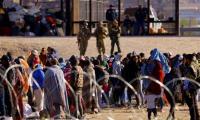to Prof Daron Acemoglu, political institutions are the main source through which development (or lack thereof) is determined in a country. Countries with ‘inclusive’ political institutions develop, while those with ‘extractive’ institutions remain under-developed. Inclusive political institutions are those that are representative. Inclusive institutions ensure that economic surplus is invested in people through proper checks and balances on the political elite. On the contrary, extractive institutions are not representative; instead they facilitate the processes through which economic surplus is pumped out of the country.
AJK does not have ‘inclusive’ political institutions; instead it has ‘extractive’ political institutions. In AJK important political and administrative powers are entrusted with a non-elected body – the Kashmir Council. It is headed by the prime minister of Pakistan (who is not elected by the people of AJK) as the chairperson, with twelve members, six of whom are picked by the prime minister from the National Assembly of Pakistan (none of them are elected by the people of AJK) and the remaining six come from the elected assembly of AJK. All the executive powers of the council are vested in the chairperson. Important subjects such as electricity, hydropower generation, tourism, population planning, banking, insurance, trading corporations, telecommunication, planning for economic coordination, highways, minerals, oil and gas, and development of industries, all fall under the dispatch of Kashmir Council. Therefore, the most important political institution is of an ‘extractive’ nature.
Now let’s take the example of high unemployment rate and its linkage with political institutions in AJK. The high rate of unemployment is a result of insufficient public and private investments in the productive sectors of the economy. A government would undertake development projects in the public sector only when the right incentives are in place –.in other words, when there are ‘inclusive’ political institutions in the country. Because in electoral democracy, the governing party undertakes development projects in the service of their electorate while hoping that they will be re-elected with the support of their electorate. But because the Kashmir Council is neither an elected nor a representative body, therefore there is an obvious incentive problem.
The prime minister of Pakistan and members of the National Assembly have their voters in mainland Pakistan and not in AJK. Meanwhile the presence of members of Azad Kashmir’s legislative assembly in the Kashmir Council is purely a token representation based on patronage and wealth. As a consequence, the state of Azad Kashmir has miserably failed in making public investments in the industrial sector. This is epitomised by the fact that there is only one industrial unit in the public sector in all of AJK.
According to the ‘social structure of accumulation’ theory, private investment requires political stability and some level of predictability about the future. The political and constitutional status of AJK is ambiguous at best – it is neither a sovereign territory nor a constitutional unit of the federation of Pakistan. It is still considered ‘disputed’ territory. Therefore, private investors are reluctant to invest in AJK due to the uncertainty associated with its geo-political future.
Historically, progressives in Pakistan have associated feudalism with underdevelopment in AJK. But empirical evidence suggests that the majority in AJK participates in independent production (more commonly known as self-employment). According to a 2013 report of the planning and development department of AJK, 87 percent of the households own land/farm in AJK; and the average farm size is 5.53 acres. But due to unavailability of institutional credit, small farmers are unable to purchase modern agricultural inputs and technology which are extremely expensive in AJK due to high transportation costs. Consequently, small farmers are forced to engage in primordial farming techniques. An obvious downside of this is low agricultural productivity.
Agricultural productivity could have been improved via proactive state intervention in the economy through collectivisation of small farms into medium-size cooperatives and by offering institutional credit to farmers. Similarly, to boost economic activity and employment the state could have facilitated the processes of rural industrialisation through small-scale industries (SSIs).
SSIs can be useful in two ways. First, in rural spaces they create more jobs compared to urban industrialisation or rural agriculture. Second, in rural spaces they can create forward and backward linkages with both agriculture and industry. This can potentially lead to higher growth in overall economy. But unfortunately the AJK state pays no attention to these economic matters. Because, as mentioned above, the pre-requisite for the state to consider and undertake these initiatives is the following: inclusive political institutions. Therefore, we can positively infer that the current state of underdevelopment in AJK can be best elucidated through its extractive political institutions.
The writer is a PhD candidate in thedepartment of economics at the University of Massachusetts, Amherst.
Email: danishkhan@econs.umass.edu
It is clear that radical policy shift is essential if Pakistan seeks to make meaningful difference in its future outlook
Turkiye has realised reform that has attracted over $100 billion of investments into its electricity markets
Bill emphasises transparency through legally binding online Mining Cadastre System
Women-led carbon projects could be the triple wins – for climate, communities and credit buyers
Challenge for writers, readers, and activists today is to break down barriers that divide literature from people it is...
US must ditch tariff fetish, rally its allies and sit down with China to salvage trade before floor caves in







